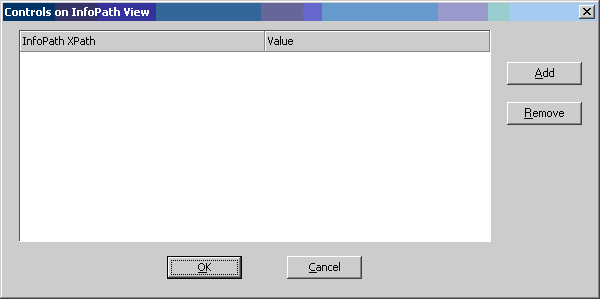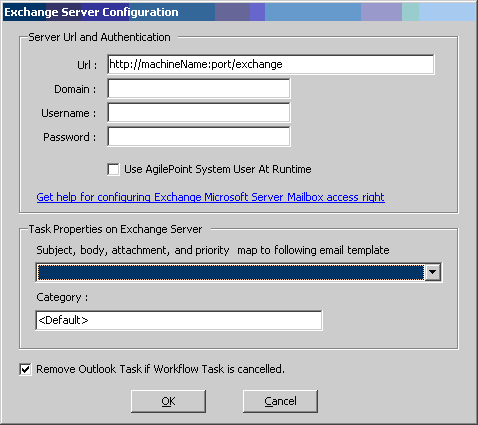
This AgileShape can be used to represent a manual (i.e. human input required) activity that uses a view of a Microsoft InfoPath form as the user interface for the activity. One use of this AgileShape is to associate several different activities with the same view in an InfoPath form. Each activity (i.e. each AgileShape instance) can be configured in order to make the InfoPath form view initialize appropriately for each individual activity.
NOTE: This AgileShape may only be used when working with a Microsoft InfoPath process template.
NOTE: This AgileShape may only be used with a Microsoft InfoPath form based on managed code (i.e. not JScript).
NOTE: This AgileShape is a specialized sub-type of the AgileWork AgileShape. Refer to the documentation for the AgileWork AgileShape for additional information about the properties and behavior that this sub-type inherits from the AgileWork AgileShape.
Design-Time Properties
NOTE: Since this AgileShape is a specialized sub-type of the AgileWork AgileShape, all of the standard properties supported by the AgileWork AgileShape are also supported by this AgileShape. Since they are already documented elsewhere, the standard AgileWork properties are not documented in this section. Refer to the documentation for the AgileWork AgileShape for information about the standard AgilePart properties. Additional design-time properties (other than the standard AgileWork properties) that are specific to this AgileShape are documented below.
UserDefinedProperties
NOTE: This property has no effect unless custom code or custom modules are created that use the specified values at runtime. This property allows the process modeler to configure ClientData initial values that will be associated with the AgileShape’s associated task(s) at runtime. This is basically a way of allowing you to specify a set of name/value pairs that are passed to your Web page via an object called a WorkItem. This is an alternative to passing data via URL parameters. In your Web page you can retrieve this data via the ClientData property of the WorkItem. It is then up to you to decide how to use the data. Click the Ellipses button to open the configuration dialog.
ViewController
This property allows the process modeler to configure. Click the Ellipses button to open the configuration dialog (as shown below).

Debug
Default value: True
For AgileShapes that support it, this property determines whether the AgileShape will log additional progress and debugging messages to the AgilePoint Server log file at runtime. This property can be set to the following specific values:
- False
This value indicates that the AgileShape will not log additional progress and debugging messages to the AgilePoint Server log file at runtime.
- True
This value indicates that the AgileShape will log additional progress and debugging messages to the AgilePoint Server log file at runtime. These messages are often helpful in verifying that the AgileShape is functioning properly and/or with troubleshooting any problems or suspected problems with the AgileShape’s runtime behavior or configuration.
EnabledExchangeServer
Default value: False
This property allows the process modeler to enable the AgileShape to integrate directly with Microsoft Exchange Server so that the AgileShape’s associated task(s) can be viewed directly from Microsoft Outlook’s Task List by the task(s)’s assigned participant(s). Refer to the ExchangeServer property for additional information.
ExchangeServer
This property allows the process modeler to configure the AgileShape’s integration with Microsoft Exchange Server. When properly enabled and configured, the AgileShape will then insert, update, and remove Task items for the task’s assigned participants, so that the tasks can be viewed directly from Microsoft Outlook. Click the Ellipses button to open the configuration dialog (as shown below).

Refer to the EnabledExchangeServer property for additional information.